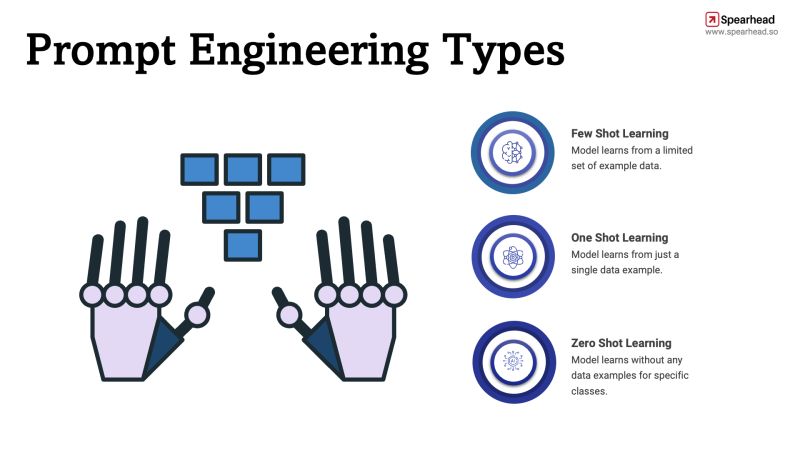There’s a transformative shift happening in AI with prompt engineering.
Traditional AI models, which once required thousands of samples and labels, are now being outperformed by Generative AI models that can learn with minimal data.
Let’s unpack the magic behind Few-Shot, One-Shot, and Zero-Shot Learning: what are these, how do they work, and what are some challenges.
Few-Shot Learning
Definition: In this method, the model learns from a limited set of data examples and tries to find patterns within those examples to learn.
Techniques: one of the techniques is Prototypical Networks where networks learn a prototype for each class in the feature space. It’s about finding the “average” representation of each class.
Real-World Analogy: Imagine learning to cook a dish with just a few key ingredients.
Challenges: Task diversity is a significant challenge. Adapting to a wide range of tasks with limited examples requires extensive fine-tuning.
Zero-Shot Learning (ZSL)
Definition: ZSL trains models without any labeled examples for specific classes.
How It Works: It leverages semantic embeddings (vector representations capturing meaning) and attribute-based learning (decomposing objects into noticeable properties).
Real-World Analogy: It’s akin to understanding a foreign language using a dictionary, without ever hearing it spoken.
Challenges: Domain adaptation is a hurdle. The distribution of instances in the target domain might differ from the source, leading to discrepancies in learned semantics.
One-Shot Learning (OSL)
Definition: OSL enables models to learn from just a single data instance.
Techniques:Memory Augmented Neural Networks (MANNs): Think of MANNs as robots with notebooks. They remember past data and use that knowledge for new data.
Siamese Networks: Twin detective neural networks that compare two items to determine their similarity.
Real-World Analogy: It’s like recognizing an apple solely by its shape and color after a single glance.
Challenges: High memory requirements and computational power are needed, making it resource-intensive.
So what are the implications and benefits of these learning techniques?
1. Data Scarcity Solution: These techniques address the age-old problem of data scarcity in AI, making models more adaptable.
2. Mimicking Human Learning: They bring AI closer to human-like learning capabilities, where we often learn from few examples.
3. Industry Revolution: From healthcare diagnostics to retail product recommendations, these techniques can revolutionize industries by providing efficient solutions without the need for vast labeled data.
In conclusion, Zero-Shot, One-Shot, and Few-Shot Learning represent a paradigm shift in AI, emphasizing quality over quantity and intelligence over brute force.
As we continue to innovate, these techniques will be at the forefront, shaping the future of AI.
#PromptEngineering #DeepLearning #GenerativeAI #DataScience

